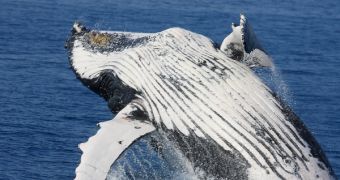The shipping lanes of the US East Coast are located directly in the path of the migratory routes that right whales take every year, from their breeding grounds in the Southern Atlantic, to their feeding grounds off the coasts of Massachusetts. A recent settlement, between environmental groups and the Coast Guard, forced the latter to agree to see scientific input before deciding how to go about changing the existing shipping lanes in the area.
Collisions with ships are one of the few remaining causes for the death of right whales, which are highly endangered at this time. The fact that females of the species only give birth once every 3 to 5 years means that it takes a lot of time before the population starts to recover, following excessive hunting. Whaling is the main cause for the extinction of several types of whales thus far, while continuing to jeopardize others as well, especially through Japan's "scientific" program, which requires its fleet to capture in the vicinity of 1,000 whales each year.
The Coastal Guard refused to submit to the urges of the Defenders of Wildlife, the Ocean Conservancy and other environmental groups that were a part of the case, because it claimed that the decision to change shipping routes rests with the International Maritime Organization, which, jurisdiction-wise, clearly outranks any US law. The institution refused to make any further comments on the matter.
In the aftermath of the settlement, the National Oceanic and Atmospheric Administration (NOAA), announced on Friday that it enacted legislation that forced ships to only travel as fast as 11.5 miles per hour, if they are at least 23 miles away from mid-Atlantic ports, and throughout right whale feeding and breeding grounds, so as to minimize the risk of hitting the animals and causing them damage, or killing them. Next week, this law will enter full effect, and will have to be applied by all ship captains.

 14 DAY TRIAL //
14 DAY TRIAL //